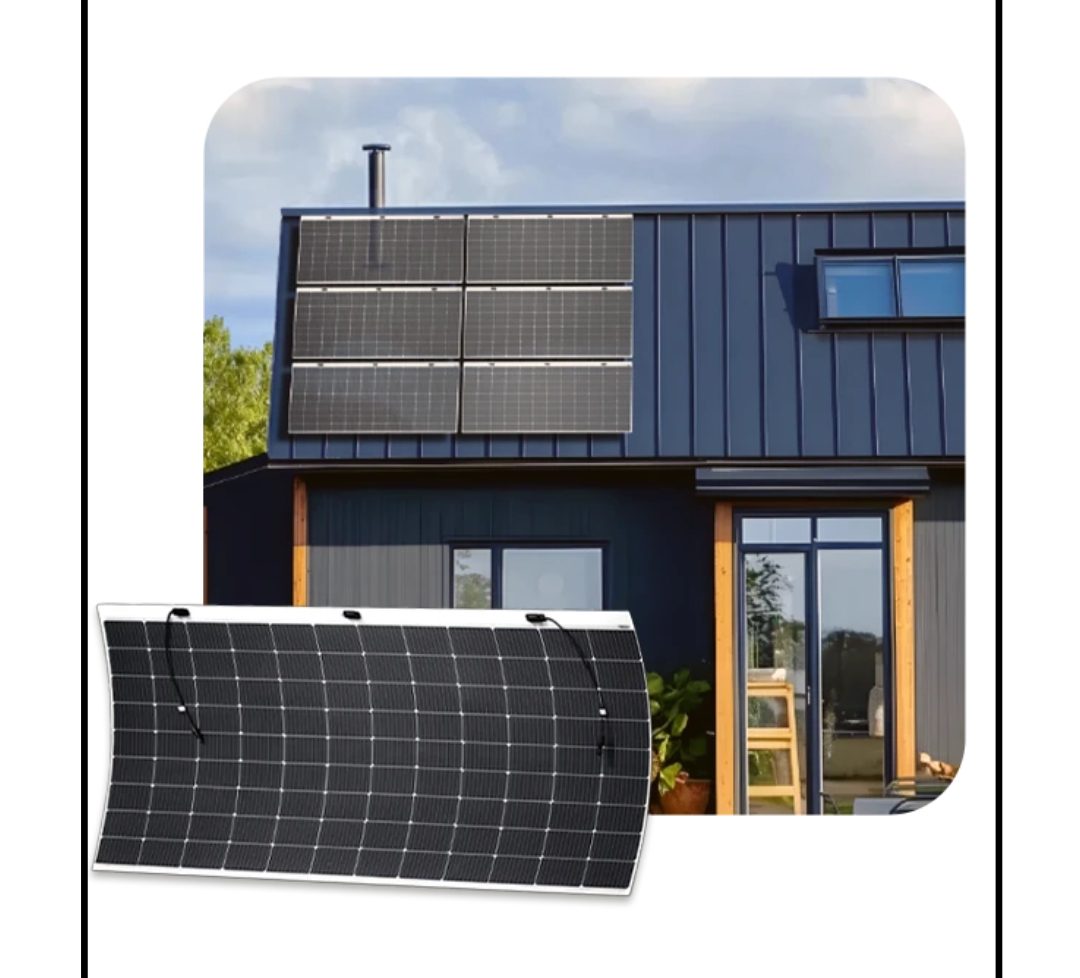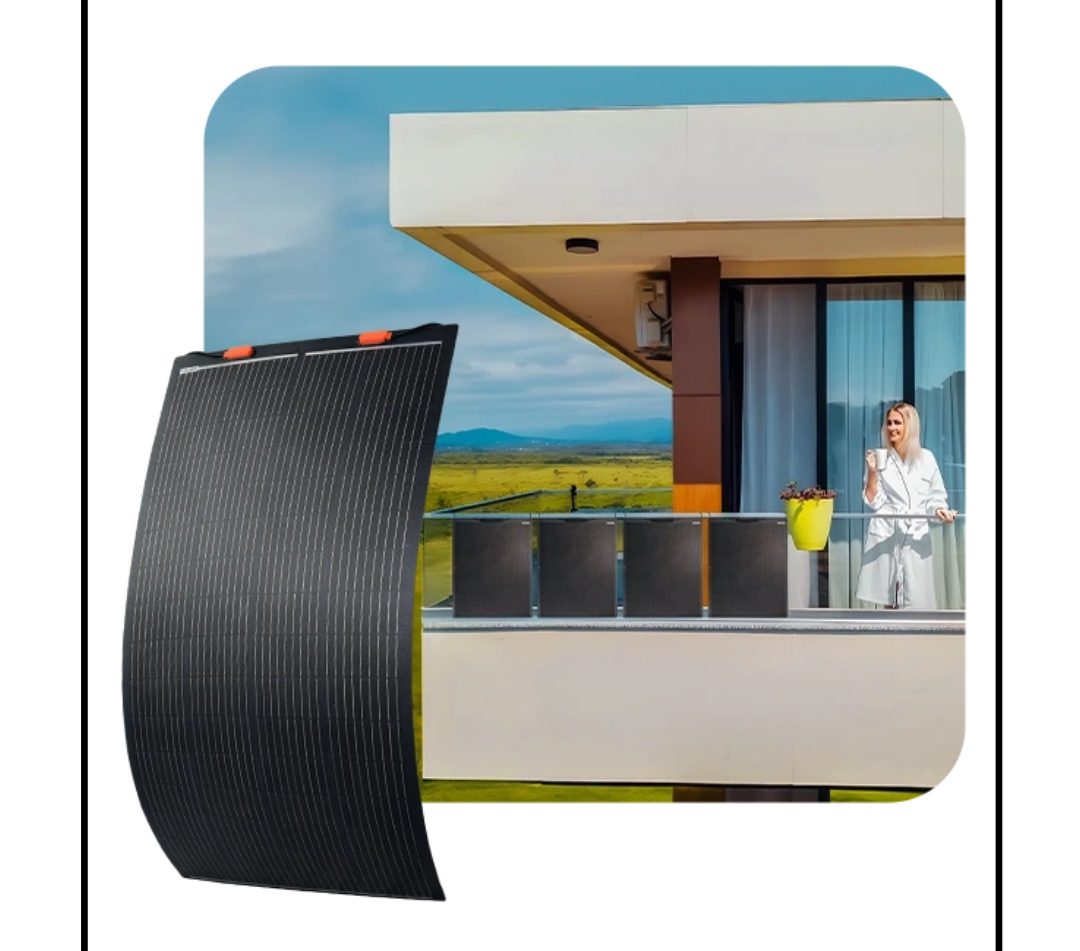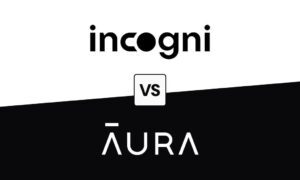In a society on the verge of moving away from fossil fuels, flexible solar panel technology is garnering much interest. Are they the next portable solar revolution? Let’s investigate.
What Are Flexible Solar Panels?
Flexible solar panels (commonly referred to as solar power flexible panels or flexible solar panels), utilize thin, lightweight, pliable substrates, rather than rigid glass and aluminum framed solar panels. This enables them to curve, conform, wrap or lie flat on uneven surfaces. Flexible solar panels conventional very thin monocrystalline or back-contact solar cells which are manufactured on flexible substrates. Some flexible solar panels are designed to bend a certain angle; thus, they stay semi-rigid in their shape.
Why People Are Excited About Them
The top benefit of flexible solar panel technology is portability. They’re much lighter and thinner so it is easier to carry, mount, and incorporate into mobile systems. That’s why flexible models are popular on RVs, boats, camping gear, and now even backpacks. They create new possibilities. You can mount these onto curved boat hulls, domed roofs, and just about any surface with a rigid panel won’t work.
And with improvements in materials (for example ETFE coatings, durable polymers, and high efficiency back contacts) flexible panels are becoming more resistant to weather, corrosion, and aging. On Sungold’s Solar, you can even find flexible panels designed to withstand salt spray, corrosion, and aging – all because of the patented materials they use.

Performance Considerations
There are tradeoffs, of course. Flexible panels generally do not match rigid panels in performance or longevity. It is not new that experiences overheating, delamination, “hot spotting” and so forth. However, many manufacturers have mitigated this with the use of ETFE surfaces, reputable encapsulation, and back structures that resist breakdown.
On a positive note, some flexible panels use higher efficiency SunPower or PERC cells. As an example, Sungold’s TF-S series utilizes back-contact SunPower cells with conversion efficiencies of up to 24% in some models. In fact, one of the models, the 165 W flexible version weighs roughly 2.84 kg (~6.25 lbs) and measures only ~2 mm thick (~0.078″).
Use Cases: Why They Shine in Mobility
Rigid panels won’t make the grade in some situations but their flexible relatives often will. Let’s look at some use cases:
Flexible solar panels for RV: Curved or nonflat roofs of van, campers, or motorhomes. Rigid Solar panels may require supporting frameworks; flexible panels can simply conform.
Boats and marine use: Saltwater, and spray, and contours require performance. Flexible panels should strive for corrosion resistance and at the least have an ETFE surface.
Portable setups (camping, backpacks, popups): A foldable or rollable flexible panel will travel as easy as you please.
Back up or auxiliary: In open-air small emergencies like might only need a quick deploy of a flexible panel wherever there are any irregular surfaces (walls, sheds, awnings).

Use Cases: Where They Flourish in Mobility
A Sungold Solar 120 W flexible solar panel is ultra-thin, weigh very little, is UBS, and environmental with weather and aging.
Rigid panels won’t make the grade in some situations but their flexible relatives often will. Let’s look at some use cases:
Flexible solar panels for RV: Curved or nonflat roofs of van, campers, or motorhomes. Rigid panels may require supporting frameworks; flexible panels can simply conform.
Boats and marine use: Saltwater, and spray, and contours require performance. Flexible panels should strive for corrosion resistance and at the least have an ETFE surface.
Portable setups (camping, backpacks, popups): A foldable or rollable flexible panel will travel as easy as you please.
Back up or auxiliary: In open-air small emergencies like might only need a quick deploy of a flexible panel wherever there are any irregular surfaces (walls, sheds, awnings).
A Sungold 120 W flexible solar panel is ultra-thin, weigh very little, is UBS, and environmental with weather and aging.
What About “200 Watt Flexible Solar Panel” Options?
Higher wattage flexible panels are coming to market. Sungold currently offers flexible panels rated up to 200 W.
The larger panel allows for higher loads, without dealing with the excessive module count needed with smaller panels. It simply requires more structural support for stability to avoid: bending stress or heat concentration.
Challenges and Mitigations
Heat: Due to the panels often flush against a surface, ventilation will be limited and can cause heat to be concentrated and reduce output and potentially wear and tear. Mitigation: elevate the panels slightly, use reflective surfaces underneath them, or look for designs that use heat resistant backing material.
Shorter lifespan: Thinner materials and repeated flexing stress can degrade performance over time. Mitigation: avoid repeated flexing, choose panels with strong UV and moisture protection, and maintain regularly.
Delamination and layer separation: Moisture ingress or adhesive failure can debond layers. Mitigation: high quality encapsulation, avoid extreme temperature fluctuations, inspect routinely.
Hot spotting: partial shading or defects may cause a local hotspot. Mitigation: bypass diodes, proper wiring, avoid shading of any parts.
Flexible Solar Panel Installation: Tips for Success
- Design the layout to ensure that the cells are not shaded or oriented in a weird overlapping manner.
- Avoid tight curves and folding, and remain within the bending limits established by the manufacturer—this is one of the most important steps in Flexible Solar Panel Installation. Too much bending can cause micro-cracks in the cells or lead to delamination over time.
- To assist in reducing heat buildup, include an air gap or ventilation behind the panel.
- Use secure mounting considerations whether with adhesive patches, grommets or clips depending on the property of the surface.
- Consider the significance of wiring with bypass diodes to diminish the risk of creating hot spots.
- Inspect frequently over time for bubbles, peeling, cracks, or warping.
Are They the Future?
Flexible solar panels are still in development regarding their role in portable renewable energy; I do not believe that they will replace rigid panels, rather be a complementary technology. Over time, the costs of the materials will lower, durability will increase, and they will be more suited for more users. Can you imagine rolling up solar panels on your tent, your canoe, your backpack?
Flexible solar technology has a place when traditional solar panels simply cannot. With thoughtful design and good products, I would argue that the downsides could be mitigated. In many mobile or irregular spaces, flexible solar panels are the future of portable renewable energy.
Conclusion
Flexible solar panels offer an interesting mix of flexibility, versatility and growing capacity; there are still hurdles to jump over including issues related to heat and wear and efficiency, but these features are being progressively addressed via technology. They are especially useful in such applications as RV, boat, off-grid, and to make sure power is always available when on a trip. As technology improves flexible solar panels will be commonplace in how we view renewable energy.
If you would like to see a couple of real-life examples or manufacturers you can count on, take a look at Sungold’s Solar to see their offerings of flexible solar panels like the TF and LE series and the details about those products.
Frequently Asked Questions
What differentiates “flexible solar panel” from a rigid panel?
Flexible panels are made of thin, flexible materials without glass / aluminum frames, and can bend and flex to match curved or irregular surfaces. Rigid panels are more efficient and durable, but, not as flexible.
Is a flexible solar panel compatible with an RV roof?
Absolutely! Flexible solar panels for RV use are great when the roof has curves or for a low-profile install. Just be sure to respect bend limits, ventilation and mounting guidelines.
Will flexible solar panels have the same lifespan as rigid ones someday?
Not likely. Their lifespan is often shorter because of thinner and lighter materials, loading stress of bending, and exposure to the environment. While good quality construction and proper installation help the lifespan, it still tends to be shorter.
What does the term “200 watt flexible solar panel” mean?
This indicates a flexible panel that can produce ~200 W in optimal sunlight. The larger the panel, the fewer total panels you will need to produce this amount of power. Flexible solar panels up to 200 W are commonplace; for example, manufacturers like Sungold have a flexible panel offering up to 200 W.
Are flexible solar panels more difficult to install?
They can be a lot easier in many cases—no heavy frames, mounts that conform to curvatures, manufactured adhesive options—but the care required around bends, ventilation, and wiring does emerge.




























